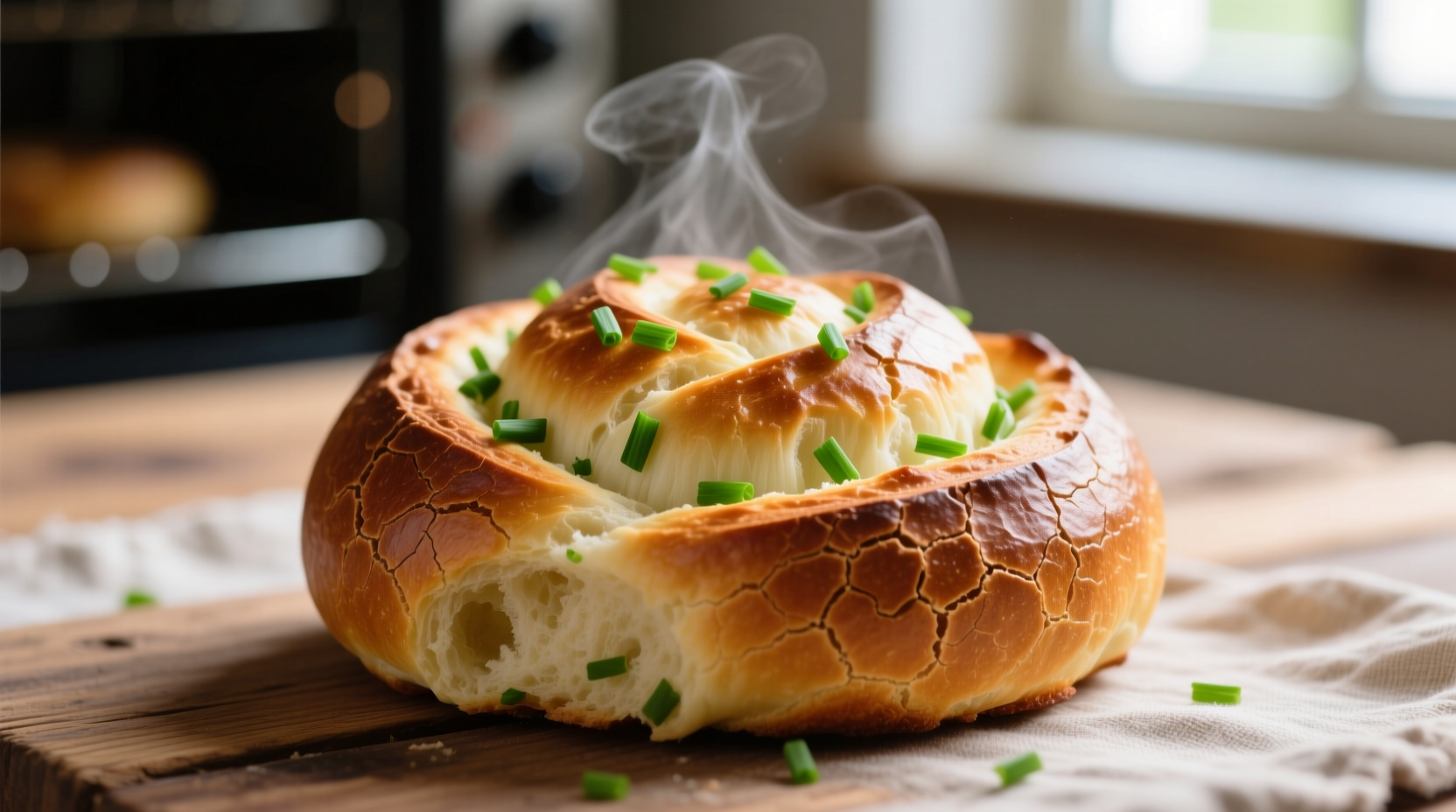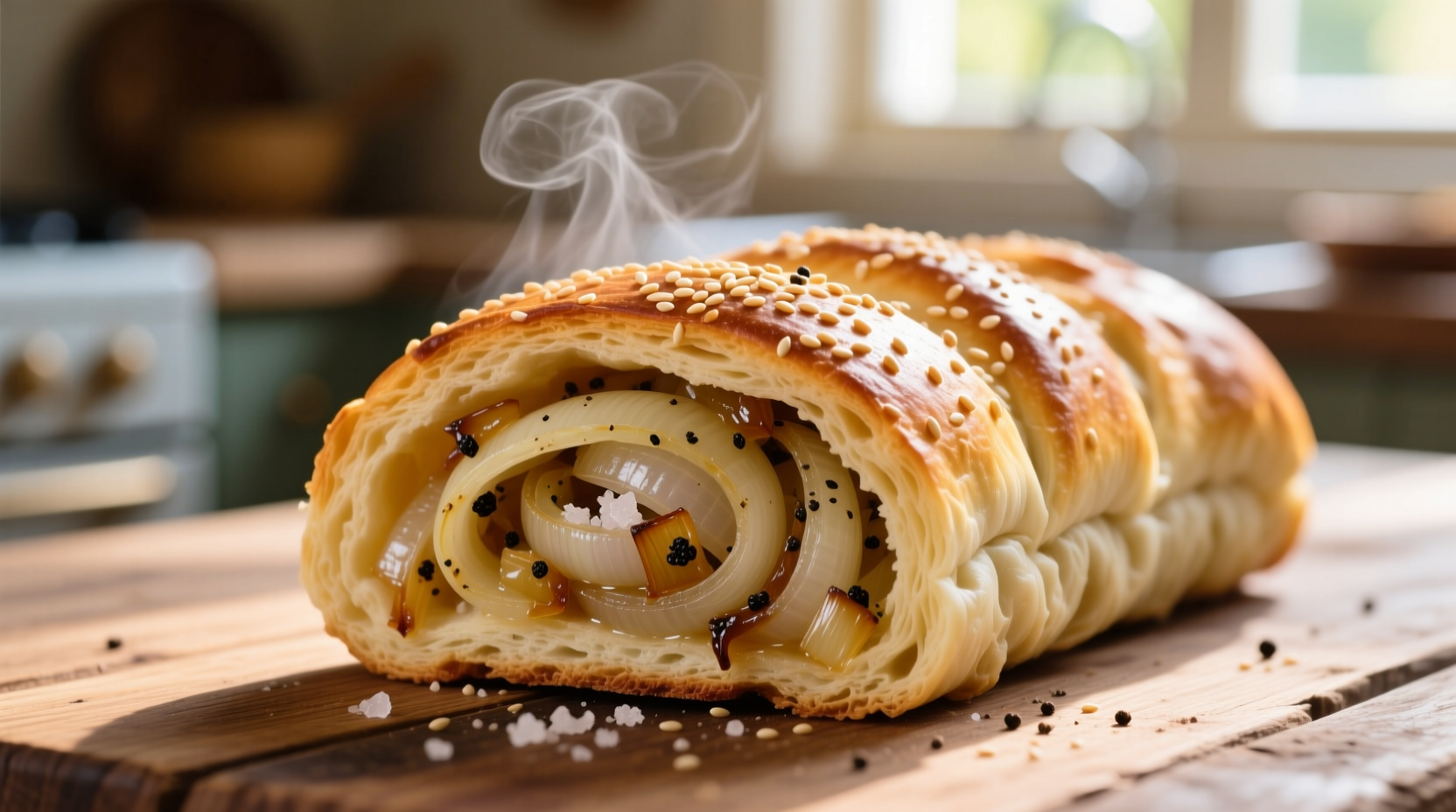The Evolution of Onion Bread: From Humble Origins to Modern Favorite
Onion bread has deep historical roots tracing back to medieval European peasant cuisine, where cooks incorporated readily available alliums into dough to stretch limited grain supplies. The specific onion roll variation emerged in early 20th century America as bakeries began producing individual portions for restaurant service. According to culinary historians at the Culinary Institute of America, onion rolls gained widespread popularity during World War II when home bakers used onions as flavor enhancers during wheat rationing.
| Era | Development | Key Ingredients |
|---|---|---|
| Medieval Europe | Peasant breads with wild onions | Rye flour, wild leeks, sourdough starter |
| Early 1900s | Commercial production begins | Wheat flour, baker's yeast, scallions |
| 1940s-1950s | Restaurant standard side bread | Enriched dough, butter, chives |
| Modern Era | Gourmet variations emerge | Sourdough bases, caramelized onions, artisan techniques |
Understanding Onion Roll Bread Variations
Not all onion rolls are created equal. Professional bakers distinguish between three primary styles based on onion preparation method and dough composition. The traditional American diner style features raw scallions mixed directly into enriched dough, creating distinct green flecks throughout. European-style onion rolls typically incorporate caramelized onions for deeper flavor complexity, while artisanal versions often use onion powder in the dough with fresh chive toppings for balanced onion essence without texture disruption.
When selecting onions for homemade rolls, freshness matters most. A University of Illinois Extension study found that scallions harvested within 48 hours provide optimal volatile compounds for maximum flavor impact. Avoid using mature bulb onions which contain higher sulfur compounds that can inhibit yeast activity and create bitter notes during baking.

Perfecting Your Onion Roll Technique
Creating exceptional onion roll bread requires attention to three critical factors: onion preparation, dough hydration, and baking temperature. For optimal results, finely mince scallions and fold them into the dough during the final kneading stage to prevent crushing cell structures that release harsh sulfur compounds. Maintain dough hydration between 65-70% to accommodate the additional moisture from fresh onions without compromising structure.
Professional bakers recommend a two-stage baking process: start at 425°F (220°C) for 10 minutes to encourage oven spring, then reduce to 375°F (190°C) for 15-18 minutes until internal temperature reaches 190°F (88°C). This technique prevents the common pitfall of burnt exteriors with undercooked interiors that plagues many home bakers attempting onion rolls.
Contextual Considerations for Onion Roll Success
Understanding when and how to serve onion roll bread significantly impacts the dining experience. These rolls excel as accompaniments to hearty soups and stews where their savory notes complement rich broths, but they overwhelm delicate seafood dishes. Food scientists at Cornell University's Food and Brand Lab note that onion rolls pair best with foods having umami ratings above 6.5 on the flavor intensity scale.
Storage requires special attention due to the high moisture content from onions. Unlike plain dinner rolls, onion rolls develop off-flavors more quickly when refrigerated. For optimal freshness, store in a linen-lined bread basket at room temperature for up to 24 hours, or freeze immediately after cooling for longer storage. Never store in plastic bags which trap moisture and accelerate staling.
Advanced Flavor Enhancement Techniques
Elevate your onion roll bread with professional flavor layering techniques. Incorporate 2% dried onion powder into the dough for consistent background flavor, then add fresh scallions during the final fold for bright top notes. For gourmet variations, try substituting 10% of the water with onion broth or adding a small amount of malt powder to enhance the natural sweetness of caramelized onions.
When preparing onion roll bread for special dietary needs, consider these adaptations: for gluten-free versions, use a xanthan gum-enhanced flour blend with increased hydration; for dairy-free options, replace butter with olive oil at a 0.8:1 ratio to maintain moisture balance. Remember that onion varieties significantly impact final flavor—chives provide mild onion notes while red onions deliver sharper profiles better suited for robust applications.
What's the best onion variety for onion roll bread?
Scallions (green onions) provide the ideal balance of mild onion flavor without overpowering the bread. Their lower sulfur content compared to mature bulb onions prevents yeast inhibition and bitter flavors during baking. Use the green portions for brighter color and more delicate flavor.
Can I make onion roll bread without yeast?
Yes, but the texture will differ significantly. For yeast-free versions, use baking powder (1.5 teaspoons per cup of flour) with buttermilk for chemical leavening. Note that these quick bread versions lack the complex flavor development of yeast-fermented rolls and work best as drop biscuits rather than traditional shaped rolls.
Why do my onion rolls flatten during baking?
Excess moisture from onions is the most common cause. Reduce fresh onion content to 15% of flour weight, squeeze out excess liquid from minced onions, or increase flour slightly to compensate. Over-proofing also causes flattening—limit final rise to 45-60 minutes at room temperature.
How can I enhance the onion flavor without adding more onions?
Try these professional techniques: 1) Sauté onions in butter until deeply caramelized before adding to dough 2) Incorporate 1% onion powder into the dry ingredients 3) Brush baked rolls with onion-infused butter 4) Add a pinch of ascorbic acid to strengthen gluten and improve flavor retention during baking.











 浙公网安备
33010002000092号
浙公网安备
33010002000092号 浙B2-20120091-4
浙B2-20120091-4